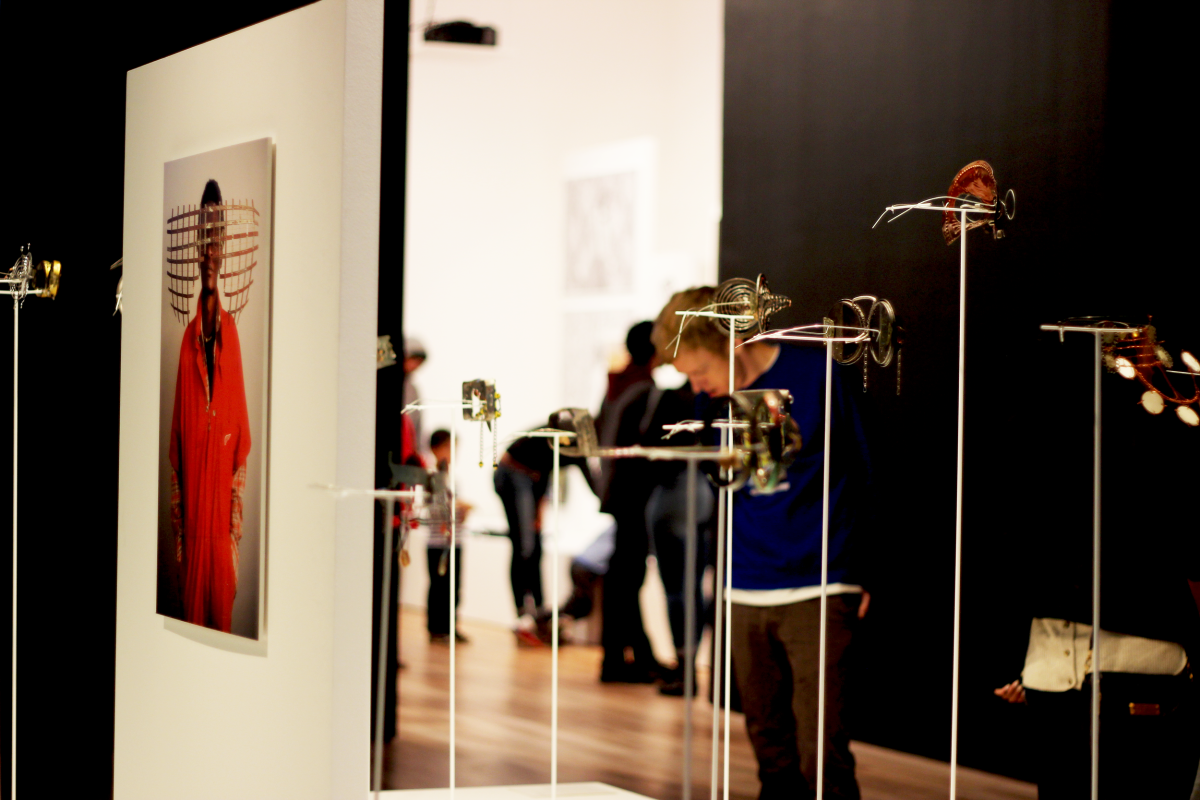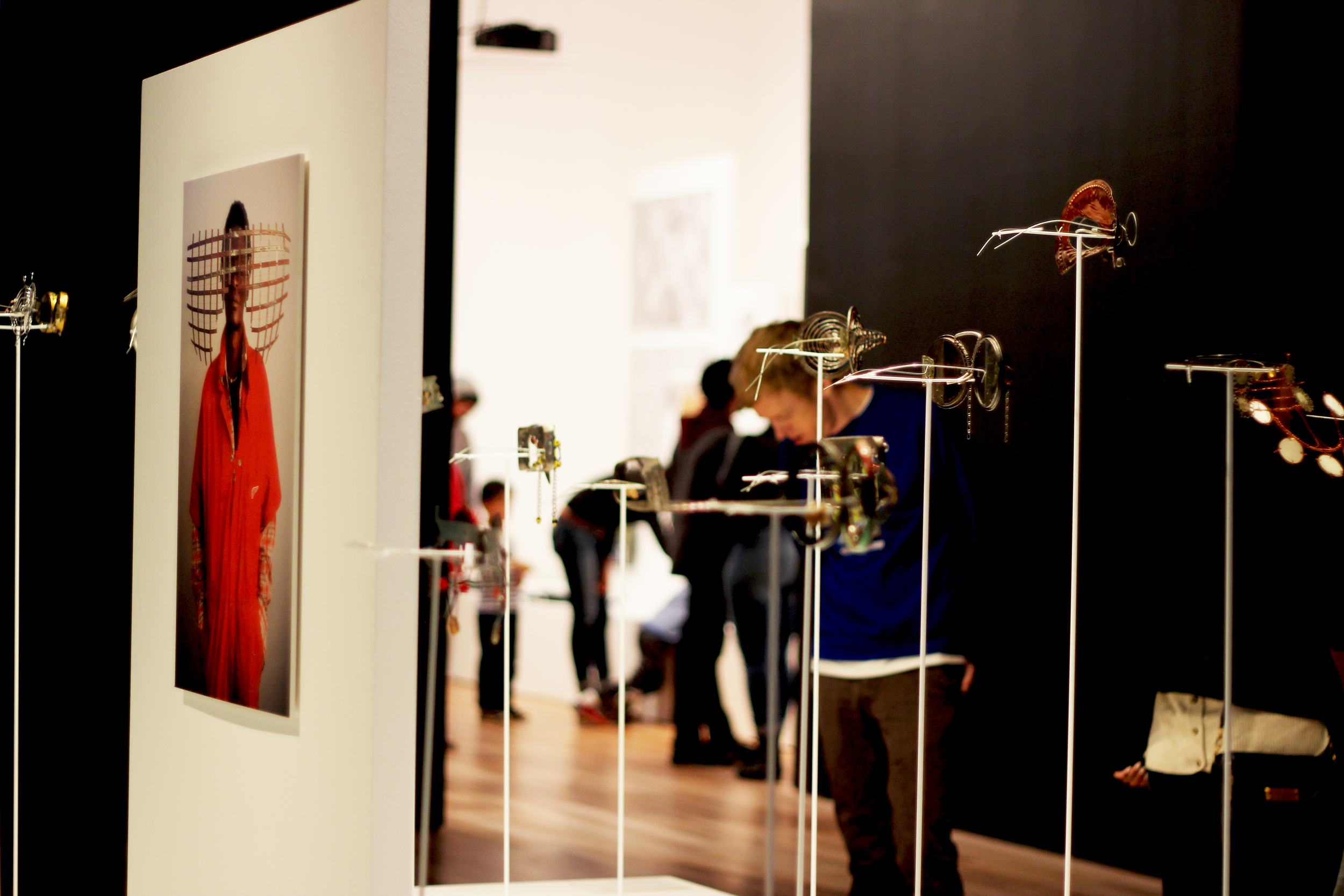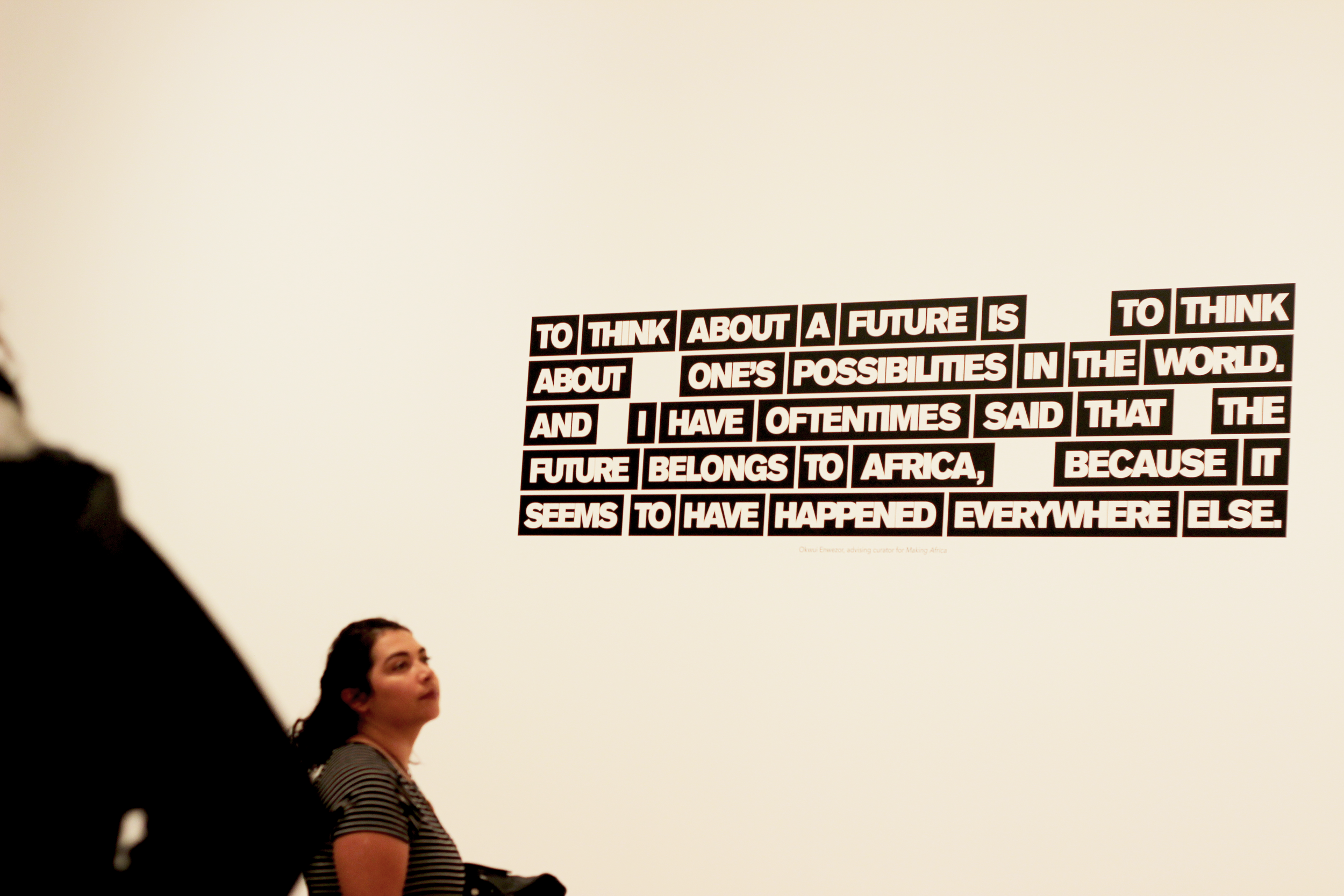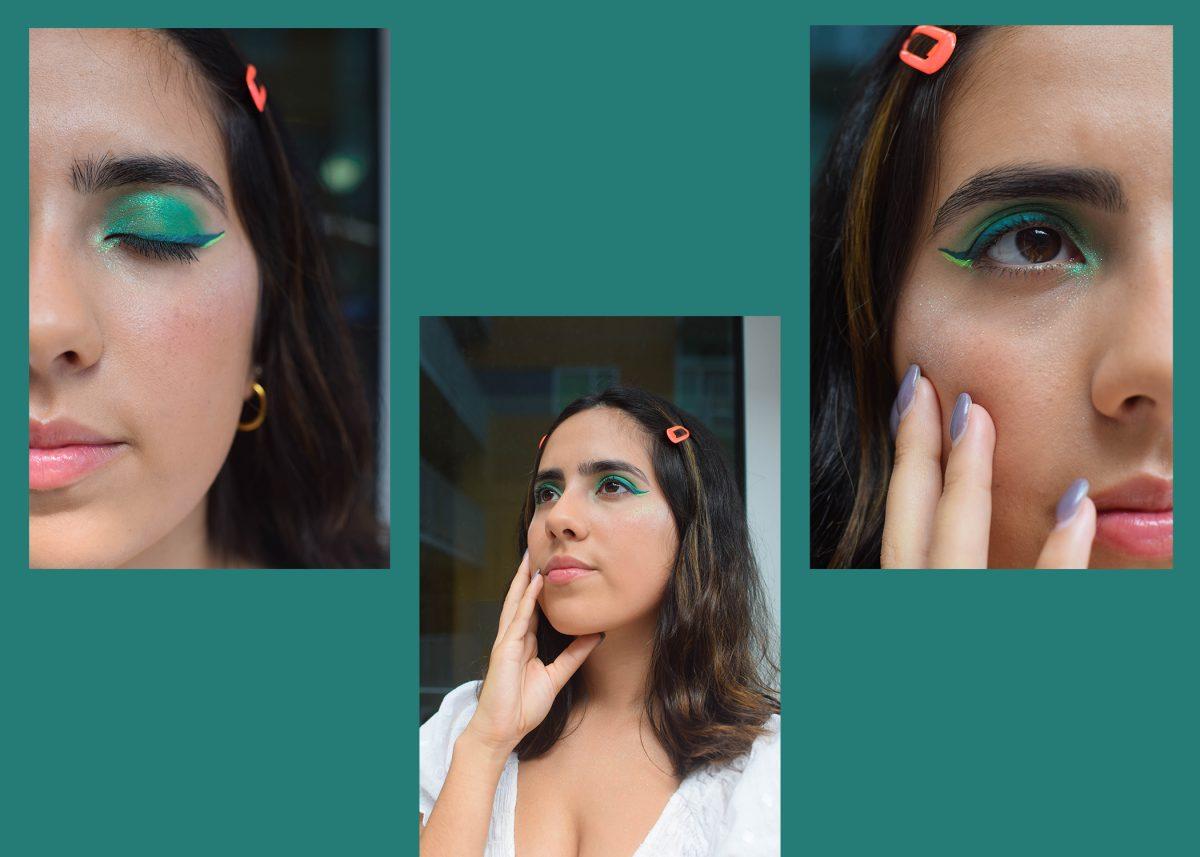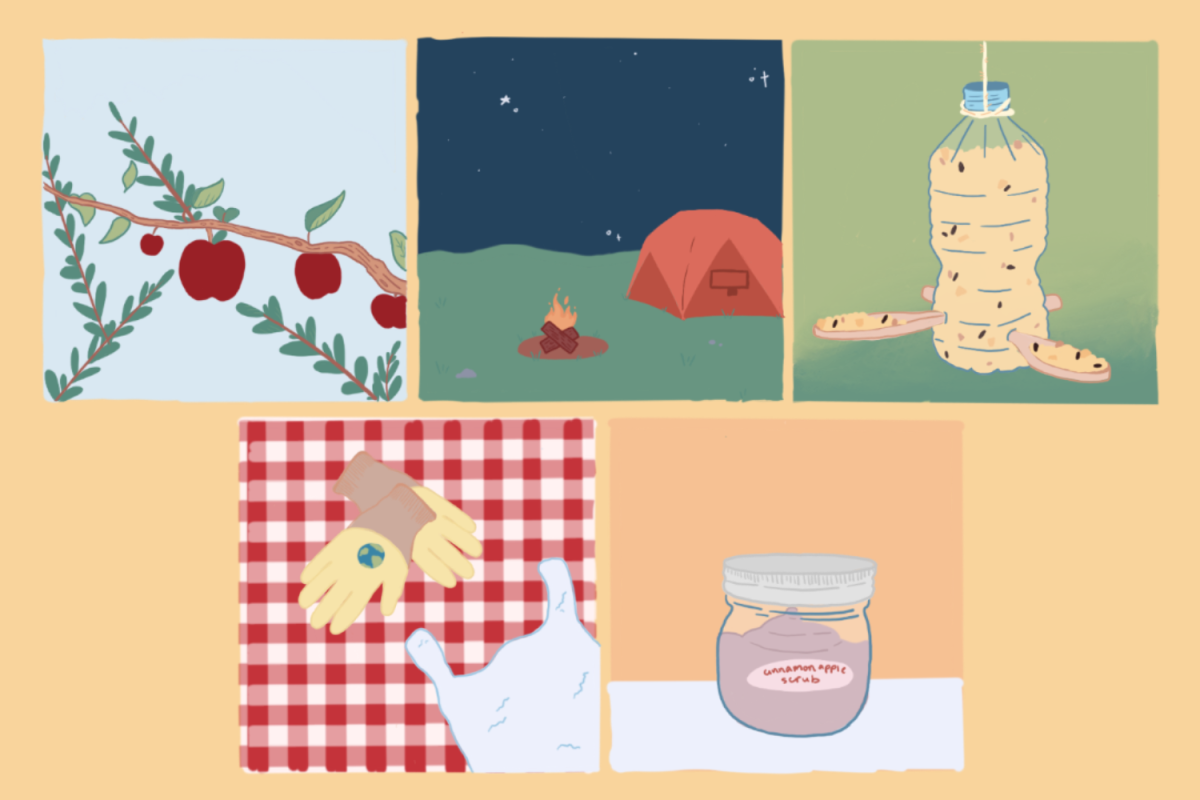Making Africa inspires change by showcasing a variety of mediums of African art.
You’ve heard of #OscarsSoWhite and until recently, art in Austin museums was looking quite the same. The Jack S. Blanton Museum of Art’s new exhibit finally gives African artists a voice that’s entirely their own, a much needed effort to contribute to African representation.
Story by Mmesomachukwu Onuoha
Photos by Kiana Fernandez
Making Africa: A Continent of Contemporary Design premiered at the Blanton on October 14. It includes works by various African artists from different countries. The exhibit itself is a cacophonous experience, unlike typical fixtures at the museum. It’s filled with noise, yet areas of quiet also find the viewer. Typical delicately crafted portraits of paint on canvas are juxtaposed against short films about heels, drag and rock and roll. There are elements meant to be mundane and others meant to be politically demonstrative. Overall, the piece gives a proper step into Africa and successfully explains that there is no summative nature to any piece representative of Africa. The continent is too grand and misunderstood to even pretend to be just one thing.
One laudable aspect of the exhibition is its offering of commonality. Claire Howard, Assistant Curator of Modern and Contemporary Art, explains how the heavy design aspect of the exhibit facilitates this with the use of objects from our everyday life. “The things in the show, you can relate to. People can use this object in Africa for a specific need versus them being objects we can conceivably use,” she said. “It prompts you to think about the common challenges we all face, and needs we have in common as well.” This gift of commonality validates the struggles of Africans as universal, gripping us into the exhibition by means of our human nature.
The exhibit is a showcase that returns ownership of the African narrative to Africans. “Undoing these outsider narratives, that you get from something like National Geographic,” Howard said. That documentary impulse for so long was assumed to be the truth. Someone like Nosarieme Garrick [an artist within the show], provides a platform for young people across the continent to tell their own stories through her web series: “My Africa Is.” The web series highlights the efforts of small community members to provide innovative solutions to their communities’ problems.
Mikhael Subotzky and Patrick Waterhouse’s Ponte City depicts photographs of every single window, television and door in the Ponte building of South Africa, literally giving a candid glimpse into the lives of black South Africans. Pieces like Yinka Shonibare’s Cha Cha Cha, and Leonce Raphael’s Musclemen depict clothing with the unmistakable ankara design, traditional in West Africa but derived from colonial times. The Untold Renaissance completely flips stereotypes of Africans by placing an African mother and her child on a throne, dead center in a Renaissance scene with European men clad in armor bent at her feet.
The exhibit ends with with a quote blocked out in black, pronouncing how the future belongs to Africa.
In Making Africa, African artists telling their experiences as individuals. They do not pretend to speak for all Africans but demand to have their collective voices acknowledged in the construction of their global image. It’s honest and naive without pretension. Still, it’s skillful and technical with pride. What’s distinct is that the way the art is crafted speaks of the experience of Africans. Stylistically they may utilize techniques like soft strokes on canvas, much like the common European classics. But they are also built of photographs, home tools, traditional dress and rusted creations, all of which derive into the message that we are all human, but our differences must not be ignored.
The name of the exhibit can be interpreted differently, but one message is that Africans and Africans alone have to power to make Africa. The process of building (or rebuilding) Africa was brought on by the cruelty of the European colonization that flung a battered continent into the 20th century, crippled under systemic and societal torture. It’s an arduous forthcoming that is honest in the difficulties Africa faces, but unlike the gaze of outside Western spectators, it speaks truth to the triumph and endless work of Africans.
Artists like Sikoki Coleman showcase the Modern Evolution Suit, depicting the pressures of motherhood, education, activism and globalization placed on African countries. Marguerite Abouet and Clément Oubrerie’s Aya de Popougon explains the hoops women must jump through when their country demands higher education but expects them to exist solely within the home. Sabelo Mlangeni’s Black Men in Dress showcases the growing LGBTQ voice in Africa and Umilio’s Magic Man video depicts Africa’s growing heavy metal scene. “It’s about how creatives of the continent, how are they constructing Africa. Africa in the 21st century is this hub of these conversations and experimentation.” Howard says. “I think that’s the fundamental takeaway from the show.”
Making Africa: A Continent of Contemporary Design will be open until January 6, 2019.































